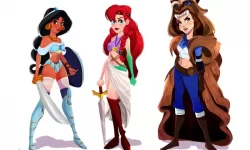The Power of STEAM Education: Integrating Arts to Foster Innovation and Creativity
Introduction:
In an increasingly complex and interconnected world, the traditional boundaries between disciplines are blurring, giving rise to interdisciplinary approaches that emphasize creativity, innovation, and problem-solving. STEAM education, which integrates arts (A) into the traditional STEM subjects (Science, Technology, Engineering, and Mathematics), offers a holistic approach to learning that nurtures both technical skills and creative thinking. This article explores the significance of STEAM education, its impact on student learning and workforce readiness, and strategies for integrating arts into STEM curriculum.
-
Rethinking STEM Education:
- While STEM subjects provide a foundation for critical thinking and technical proficiency, they often overlook the importance of creativity and imagination. STEAM education recognizes the inherent connections between science, technology, engineering, mathematics, and the arts, fostering a more comprehensive approach to learning.
- By integrating arts into STEM curriculum, students are encouraged to explore complex problems from multiple perspectives, unleashing their creativity and unlocking innovative solutions. This interdisciplinary approach reflects the dynamic nature of real-world challenges and prepares students for success in diverse fields.
-
Fostering Creativity and Innovation:
- The arts play a crucial role in fostering creativity, imagination, and divergent thinking—skills that are increasingly valued in today’s knowledge-based economy. Through hands-on activities such as creative writing, visual arts, music, and theater, students develop the ability to think critically, experiment with new ideas, and communicate their findings effectively.
- By engaging with artistic processes, students learn to approach problems with open-mindedness, curiosity, and resilience, cultivating the mindset of lifelong learners and innovators. Moreover, integrating arts into STEM curriculum encourages collaboration, communication, and interdisciplinary teamwork, mirroring real-world professional environments.
-
Bridging the Gap Between STEM and the Humanities:
- STEAM education bridges the gap between STEM disciplines and the humanities, fostering a holistic understanding of the human experience and its intersection with technology and innovation. Through interdisciplinary projects, students explore the social, ethical, and cultural implications of scientific advancements, promoting ethical decision-making and social responsibility.
- By incorporating arts-based inquiry into STEM curriculum, educators create inclusive learning environments that cater to diverse learning styles and interests. Arts integration provides opportunities for students to express their identities, cultures, and lived experiences, fostering a sense of belonging and empowerment in the classroom.
-
Strategies for Integration:
- Educators can integrate arts into STEM curriculum through project-based learning, inquiry-based activities, and cross-disciplinary collaborations. By infusing artistic elements into STEM projects, educators spark students’ creativity and engagement, making learning more meaningful and relevant.
- Technology tools such as digital storytelling, multimedia presentations, and virtual simulations offer innovative ways to incorporate arts into STEM instruction, providing students with opportunities to experiment, create, and communicate their ideas effectively.
-
Empowering the Next Generation of Innovators:
- As we navigate the challenges of the 21st century, STEAM education emerges as a powerful tool for empowering the next generation of innovators, problem-solvers, and changemakers. By integrating arts into STEM curriculum, educators cultivate the skills and dispositions needed to thrive in a rapidly evolving world.
- As advocates for STEAM education, educators, policymakers, and industry leaders must collaborate to promote equitable access to high-quality STEAM learning experiences for all students. By investing in STEAM education, we can unleash the full potential of future generations and build a more inclusive, innovative, and sustainable society.
Conclusion:
STEAM education represents a paradigm shift in how we approach teaching and learning, emphasizing the interconnectedness of disciplines and the importance of creativity in problem-solving. By integrating arts into STEM curriculum, educators prepare students to navigate the complexities of the modern world with confidence, curiosity, and resilience. As we continue to champion STEAM education, let us embrace the transformative power of creativity and collaboration in shaping a brighter future for all.







